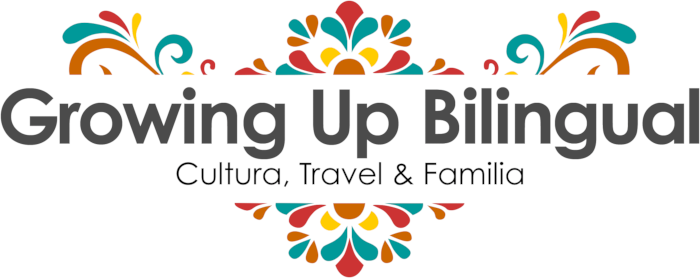The most popular Day of the Dead flower varieties include, of course, marigolds as the most iconic Dia de los Muertos flowers. However, several other flower varieties are commonly used to decorate ofrendas and gravesites for this special occasion including cockscomb, baby’s breath and others. Let’s take a closer look at what each Day of the Dead flower symbolize and how they are incorporated into the Day of the Dead festivities in Mexico.
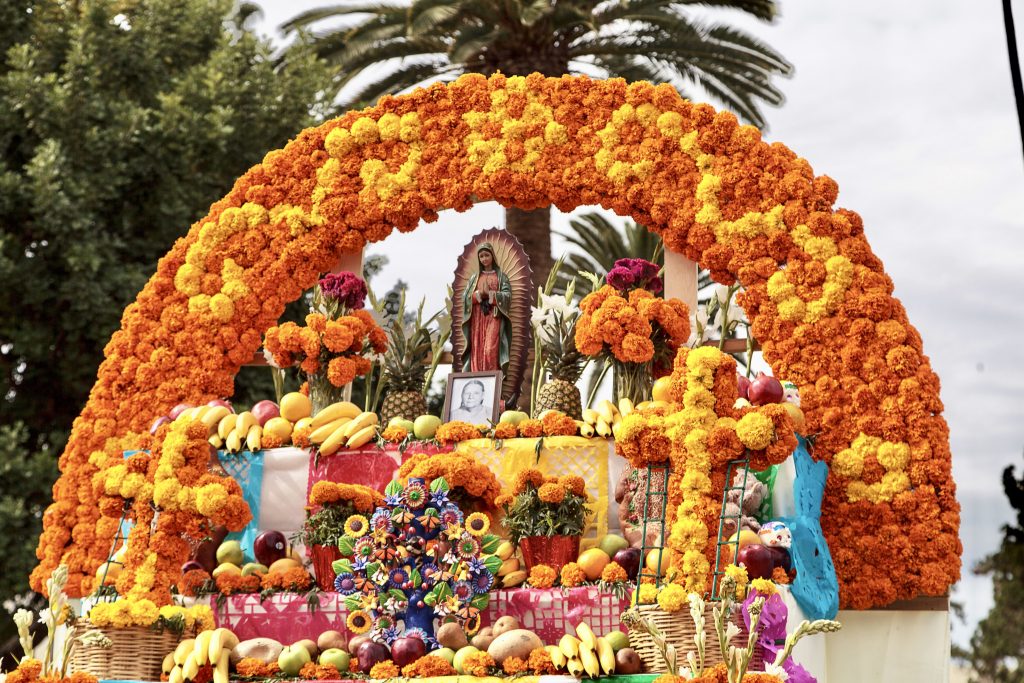
These beautiful blooms play a significant role in honoring our loved ones during this heartfelt tradition. Here is what each Dia de los Muertos flower symbolizes and how it’s used during the Day of the Dead celebrations.
Day of the Dead Flowers Play an Important Part in el Dia de los Muertos Traditions
Flowers play an essential role in Dia de los Muertos traditions as decorative and symbolic elements, with marigolds, known as “cempasúchil” in Mexic, being the most iconic. However, marigolds are not the only flowers in the spotlight during this celebration.
Families and communities use a variety of blooms to decorate ofrendas (altars) along with sugar skulls, pan de muerto and other traditional Day of the Dead foods like ayotes en miel, along with photos and mementos the the departed. Flowers are also used to adorn gravesites. These flowers represent the cycle of life and death. They are a heartfelt way to honor and remember departed loved ones during Dia de los Muertos.
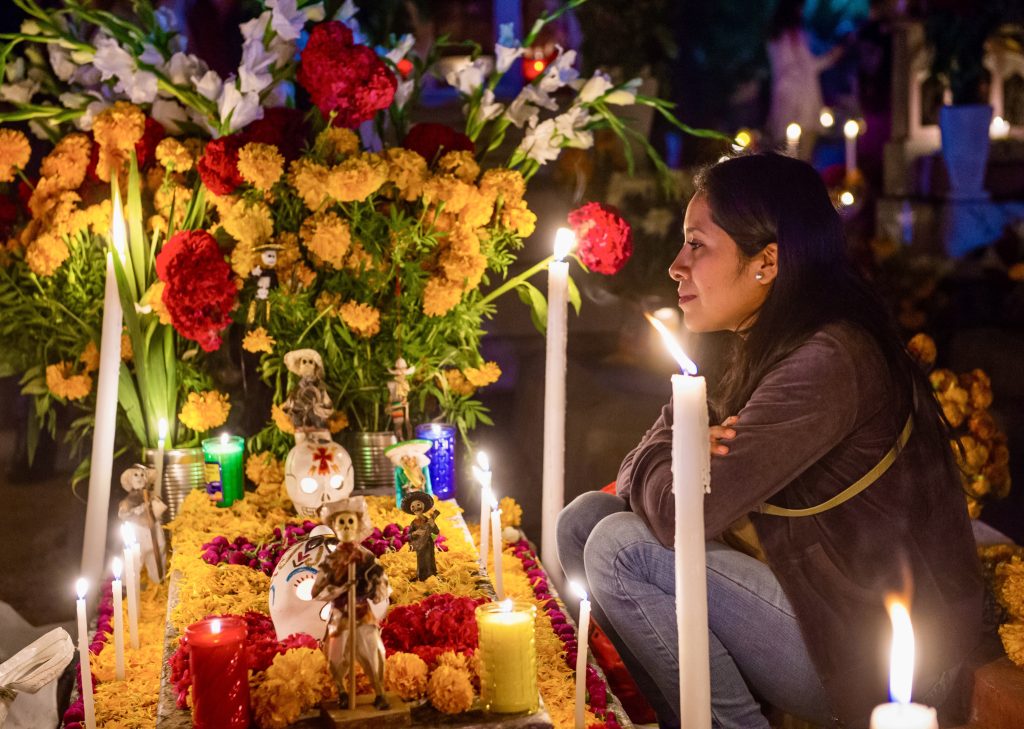
What Flowers Are Used for Dia de los Muertos or Day of the Dead?
The most common flowers used for Dia de los Muertos (Day of the Dead) include the popular marigolds, known as cempasúchil in Spanish, but other flowers like cockscombs, baby’s breath, chrysanthemum, and carnations are also popular during these celebrations. These flower varieties are commonly used to decorate Dia de los Muertos altars and graves in the cemetery. During Dia de los Muertos, flowers are also used to create colorful carpets called tapetes, make crowns for people to wear, and craft beautiful decorations.

Flowers used for the Day of the Dead go far beyond mere adornment. They are vital symbols, each with its profound meaning, deeply intertwined with the rich tapestry of Day of the Dead, or Dia de los Muertos, celebrations. While they grace altars prominently, their significance extends beyond, weaving a narrative of remembrance, honor, and the celebration of life.
Marigolds (Cempasúchil)
Marigolds called “cempasúchil” in Spanish, take center stage on November 2nd for the Day of the Dead celebrations. Their name, “cempasúchil,” has a lot of history—it comes from the Nahuatl language. It means “twenty flowers” or “of the four hundred petals.” There are many varieties of marigolds but the one most commonly used f0r the Day of the Dead ofrendas and to decorate gravesites is the Aztec marigold (Tagetes erecta).
These flowers don’t just decorate altars; they are also used to create colorful petal pathways and garlands to help the spirits find their way home. Cempasuchil flowers are even used to add a special touch to traditional Day of the Dead recipes from pan de muerto to cempasuchil atole.

What do Marigolds (Cempasuchil) Symbolize for Dia de los Muertos
Their bright and cheery hues of marigolds, in shades of yellow and intense orange, symbolize joy and the vibrancy of life. Yet, their significance delves deeper. The marigold’s alluring fragrance is believed to act as a guiding light, beckoning the spirits of the departed to the world of the living during this sacred time. To learn more about the symbolism and use of marigolds in Dia de los Muertos celebrations, from marigold crafts to marigold recipes, read my article about why Marigolds are such an essential part of the Day Of the Dead Celebrations.
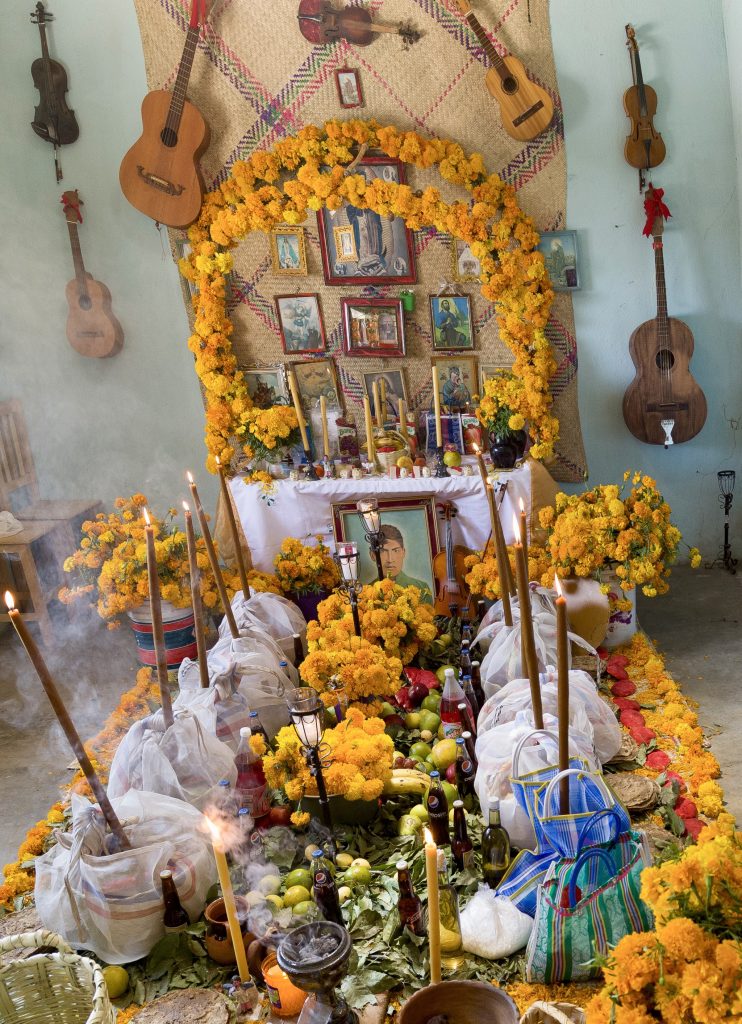
Baby’s Breath (Nube):
While less frequently in the spotlight, Baby’s Breath, scientifically known as gypsophila muralis, plays a crucial role. Beyond altar decorations, these delicate blooms often find their way into floral wreaths, crowns, and bouquets worn by the living.
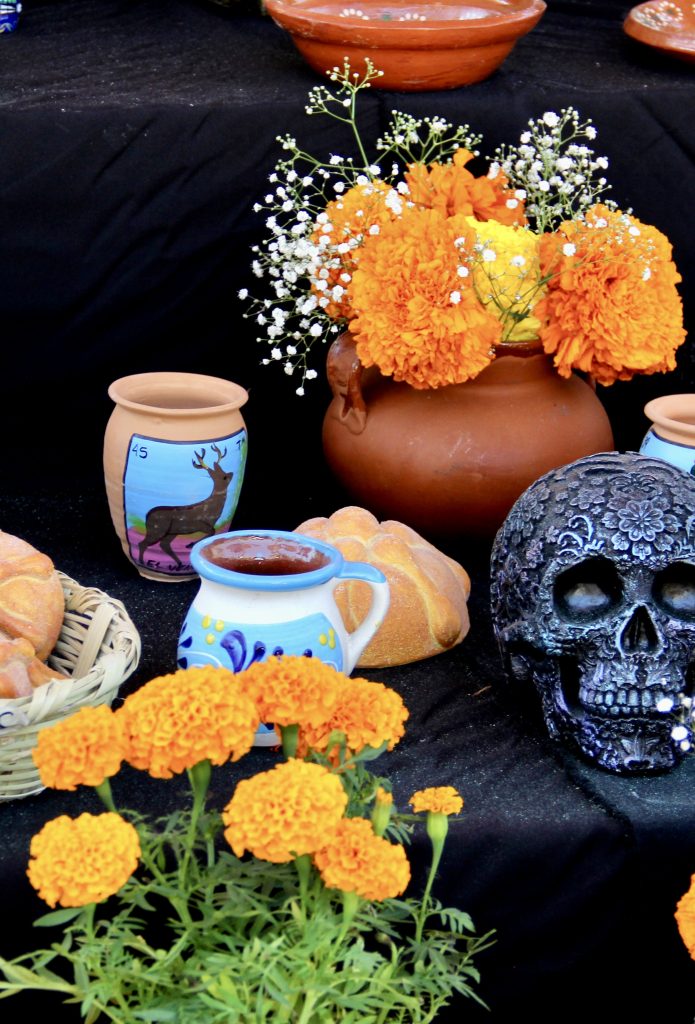
What do Baby’s Breath (Nube) Flowers Symbolize for Dia de los Muertos
Baby’s breath’s pure white petals symbolize the innocence and purity of the souls being celebrated. They also represent remembrance and a connection between the realms of the living and the deceased.
Cockscomb (Terciopelo):
Cockscomb, scientifically known as celosia cristata, is a striking flower with vibrant red and white hues that captivate the senses during Day of the Dead celebrations. It holds a special place in these traditions, as it is not merely used for decorative purposes; it is also believed to possess healing properties, symbolizing the spiritual and medicinal aspects of the holiday.
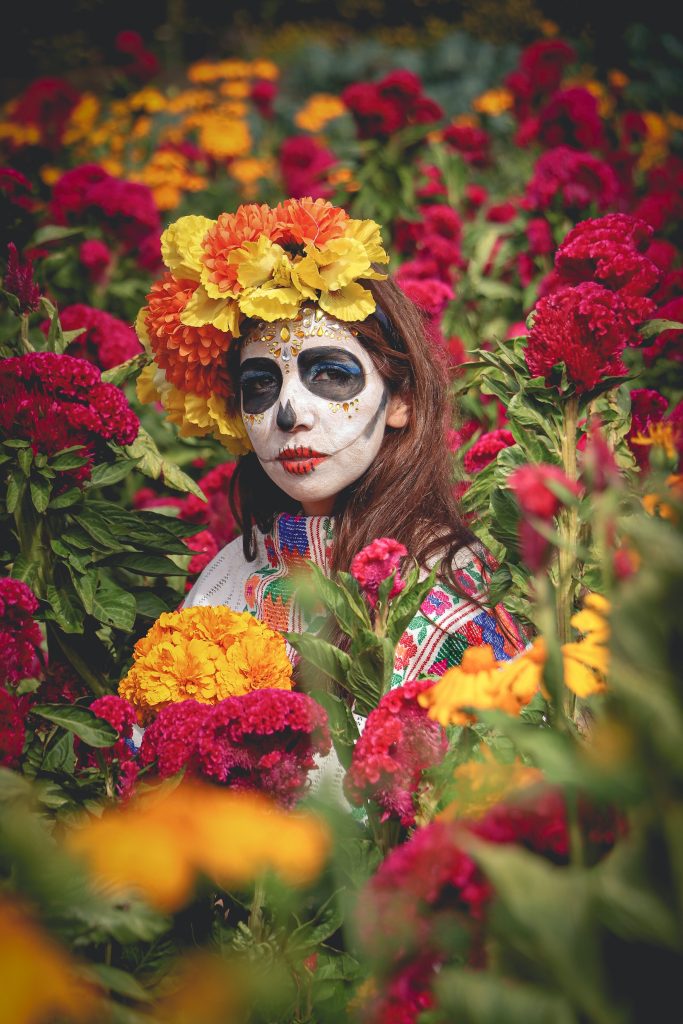
What do Cockscomb (Terciopelo) Flowers Symbolize for Dia de los Muertos
The colors of the cockscomb have special meanings in ancient Mexican traditions and Catholic beliefs. Purple and fuchsia symbolize mourning, while the red cockscomb represents Christ’s blood and his return from the dead in Catholicism. Because this flower has been used in remedies for different health issues, it also means a belief in healing. This connects these flowers to the idea that feeling closer to our departed loved ones as we celebrate their memory can bring comfort and healing when grieving their loss.
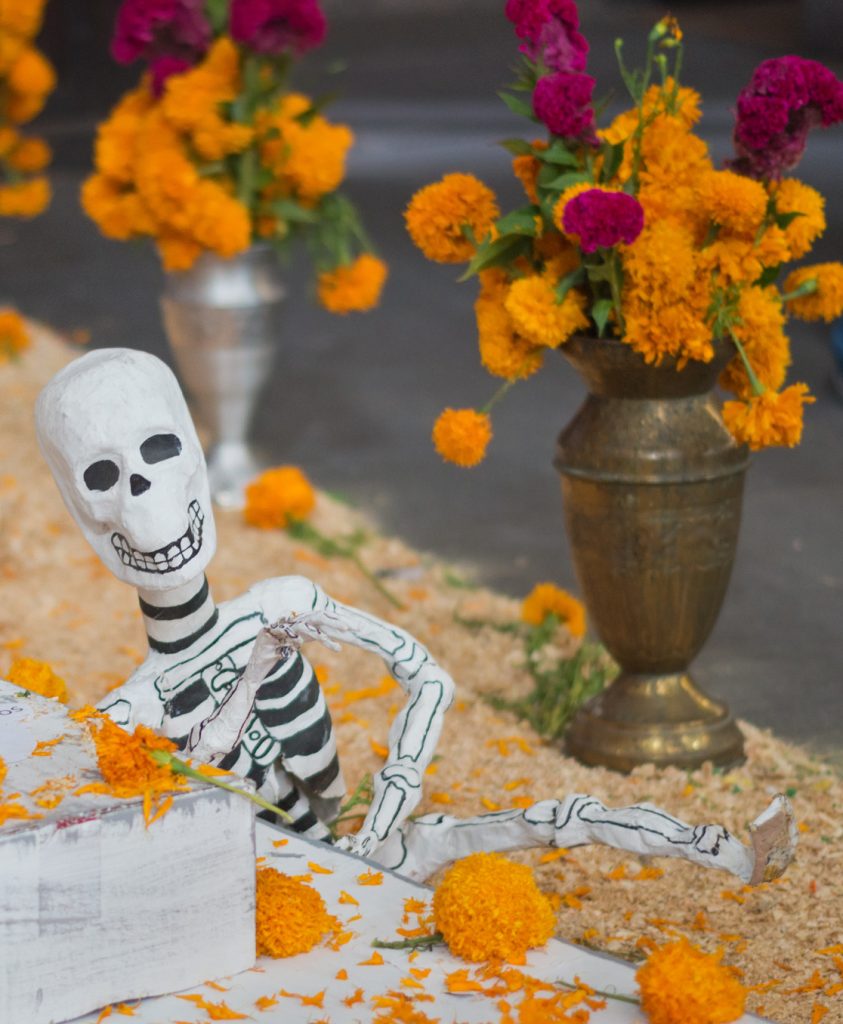
Chrysanthemums:
Chrysanthemums, often called the “flower of gold,” burst into full bloom during the transition from autumn to winter, perfectly synchronizing with the arrival of the Day of the Dead festivities. These vibrant blossoms, available in a variety of colors, are lovingly placed on altars to honor the departed, and their cheerful presence extends to the gravesites.
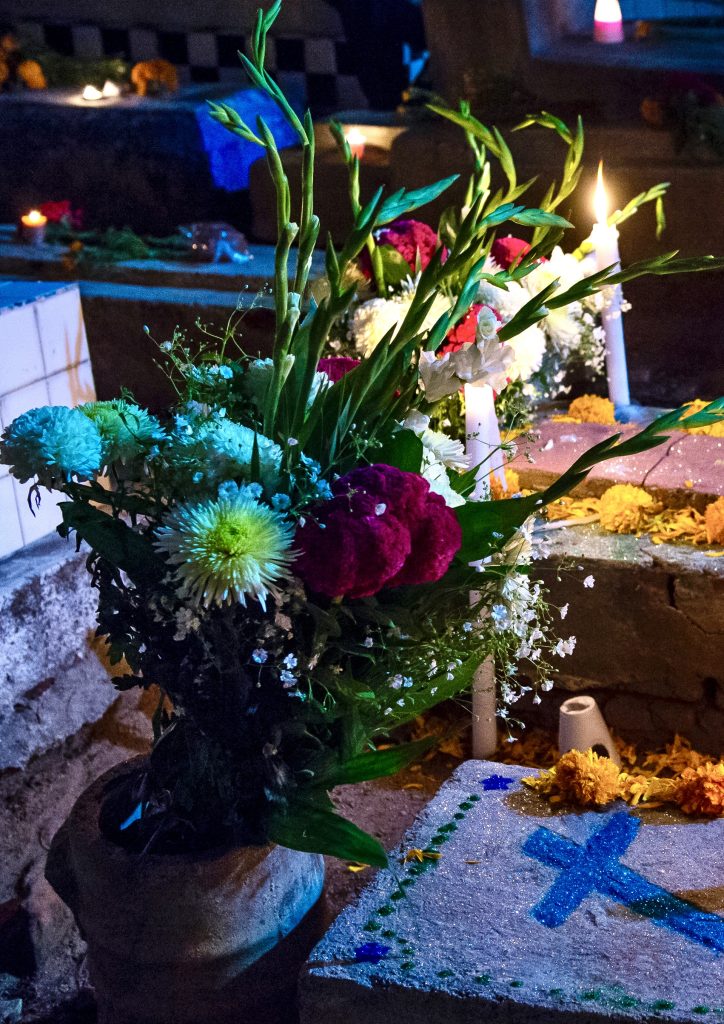
What do Chrysanthemums (Crysantemos) Flowers Symbolize for Dia de los Muertos
Chrysanthemums hold a special meaning during the Day of the Dead because they remind us that life is constantly changing, just like the turning of the seasons. Chrysanthemums also represent the strong bond between the living and those who have passed away.
Gladiolus (Gladiolas):
During the Day of the Dead, people often put these long-stemmed flowers on graves and tombstones. They can use them alone or mix them with traditional flowers for a fuller arrangement. These flowers also look impressive with their long stems and big blooms, making them perfect as the main focus in larger displays.
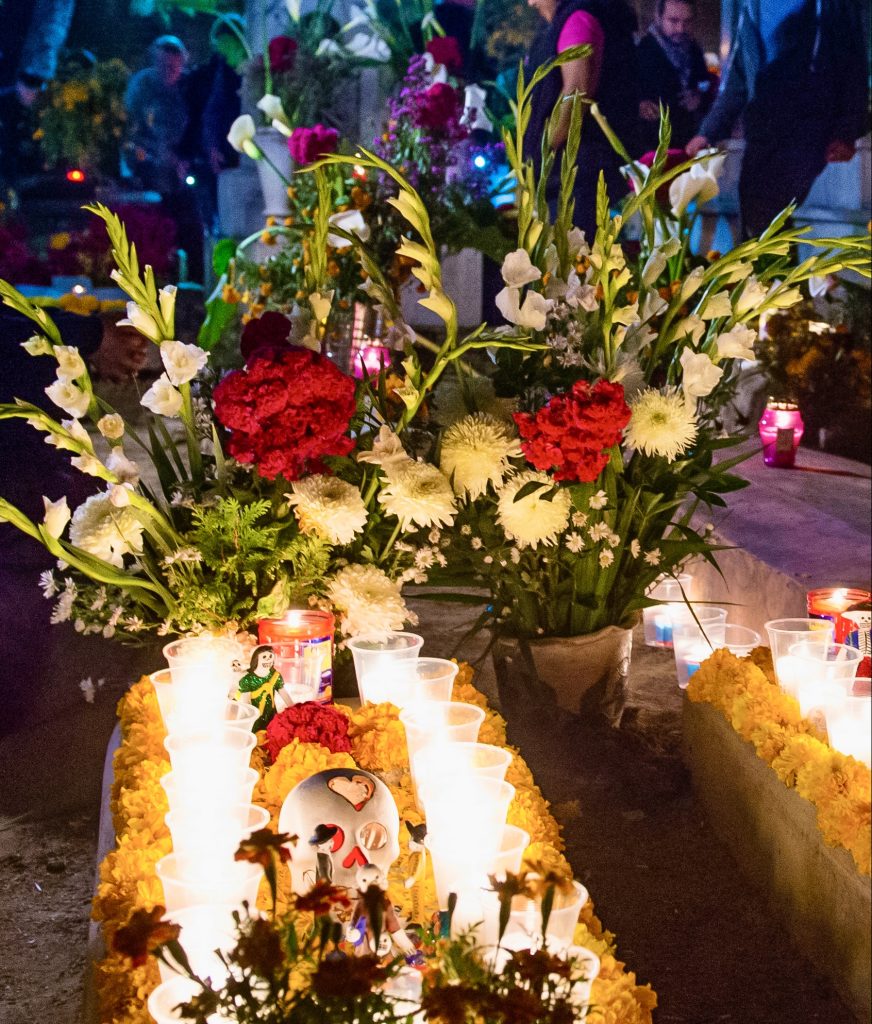
What do Gladiolus (Gladiolas) Flowers Symbolize for Dia de los Muertos
Gladiolus flowers are believed to symbolize remembrance and faithfulness, which makes them an ideal flower choice for the Day of the Dead ofrendas and for adorning gravesites during Día De Los Muertos celebrations, as they beautifully embody the themes of remembrance and faithfulness that are central to this tradition.
Carnations (Claveles):
In some regions of Mexico, carnations are often used to adorn ofrendas and gravesites on the Day of the Dead. While their primary use is in altar decorations, these fragrant blooms also find their place in bouquets and garlands worn by the living during the celebrations, adding an extra layer of symbolism and connection.
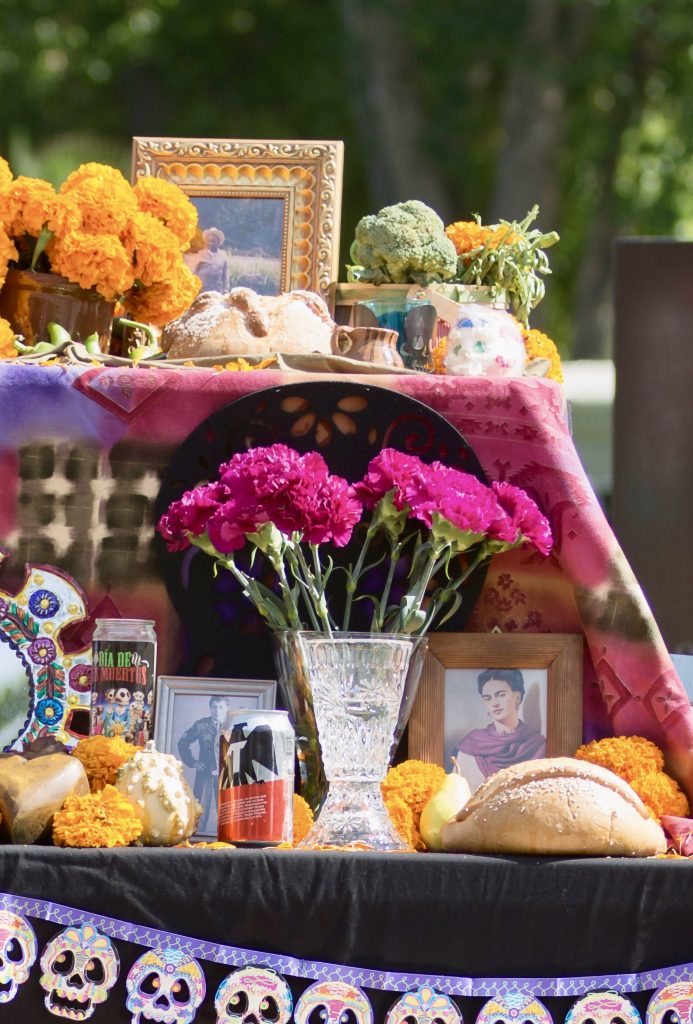
What do Carnations (Claveles) Flowers Symbolize for Dia de los Muertos
Carnations play a meaningful role during the Day of the Dead because they symbolize admiration and respect for those who have passed away. The colors of carnations also carry specific significance in this tradition. For instance, white carnations represent purity and are often used to honor deceased children. On the other hand, red carnations symbolize love and are used to pay tribute to dead adults. These color choices are a way to express different emotions and sentiments towards the departed, making carnations a thoughtful and meaningful addition to the Day of the Dead celebrations.
White Roses (Rosas Blancas)
White roses frequently find their place in floral displays on ofrendas. They are often combined with other Day of the Dead flowers to adorn gravesites. White roses hold a special significance as one of the most commonly chosen funeral flowers. When you place white roses as a tribute to the departed, it serves as a loving farewell, a heartfelt message to the one you hold dear in your memories.

What do White Roses (Rosas Blancas) Symbolize for Dia de los Muertos
White roses carry symbolic meanings of strength, harmony, and purity. Their purpose is to unite individuals in a sense of spiritual tranquility and deep respect.
During Dia de los Muertos, these Day of the Dead flowers are not just decorations but living symbols that make the celebration more meaningful. They attract spirits, connect the living and the departed, and show deep feelings of remembrance, love, and the cycle of life and death.
If you’re interested in experiencing the Day of the Dead in all of it’s beauty and learn more about this traditions first hand there’s nothing better than spending Día De Los Muertos in Mexico. Check out my article about the best events for Day of the Dead in Mexico City or consider enjoying Day of the Dead in Mazatlán where you can experience the tradition and art of Día De Los Muertos and enjoy a beach vacation too.
- Best Things to do in Granada, Nicaragua with Teens - April 28, 2024
- Guatemalan Dulce de Chilacayote Recipe (Crystalized Chilacayote Candy) - February 26, 2024
- Guatemalan Naranjas en Miel Recipe (Candied Oranges Recipe) - February 25, 2024
